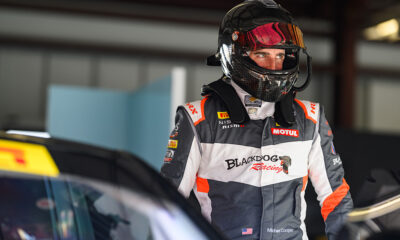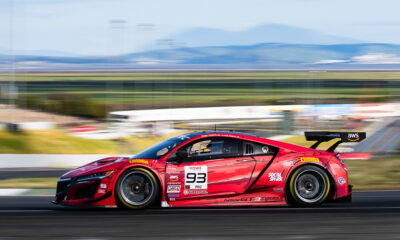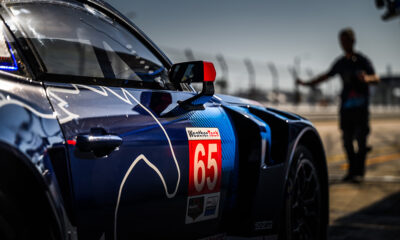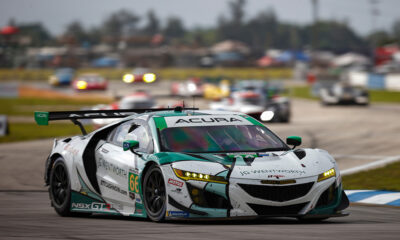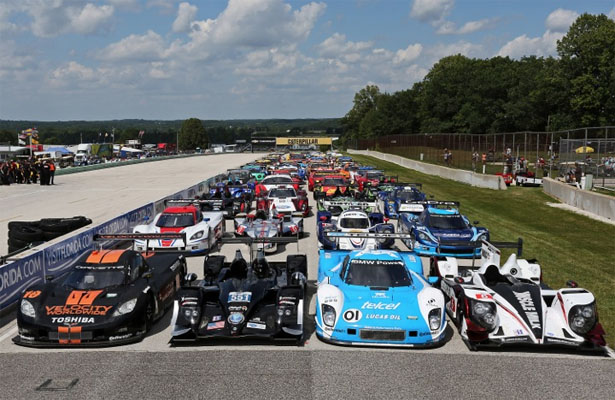
Pnoto: Brian Cleary/GRAND-AM
On a hot summer day in Baltimore, one year ago, the entire sports car racing world was turned upside down with the shocking revelation that GRAND-AM and the American Le Mans Series were set for a historic merger.
Some didn’t believe it at first. Understandably so, as the two series had been bitter rivals for more than a decade, with what appeared to be no hope in sight for a unification that was essential for the survival of North American sports car racing.
While work went on behind the scenes for months before this reporter uncovered and published details of GRAND-AM’s acquisition of the ALMS, just days prior to the scheduled announcement at Daytona on Sept. 5, 2012, many of us were still left in awe that the unthinkable was about to happen.
Reflecting back on the initial weeks and months that followed, there was a sense of optimism in the air from both parties.
ALMS President and CEO Scott Atherton made his first of many public appearances at GRAND-AM events, and even helped hand out awards at the end-of-year Rolex Series banquet. Atherton’s counterpart at GRAND-AM, Ed Bennett, had similar duties through the tail end of the 2012 ALMS season as well.
But as the New Year dawned, the warm and fuzzy feeling began to wear off.
The class structure was announced at the Roar Before the Rolex 24, sparking the first bit of controversy with the elimination of the P1 class and initial doubts over how the P2 and DP cars would be balanced into a single category.
The United SportsCar Racing series name and branding reveal came next at Sebring in March, followed by confirmation of the executive team, led by Bennett and Atherton, nearly three months later. But then there was silence.
By the Le Mans break, teams in both paddocks were left with more questions than answers. What will the final regulations look like? How will the P2 and DP cars be balanced? How many races will be on the 2014 schedule? How will teams deal with increased costs?
Nobody seemed to have any answers at the time, and the discontent from many team owners turned into a game of finger pointing, both at the series and also at their competitors, particularly in what became a heated debate over the fate of the new Prototype class.
As both series headed into the summer stretch of races, news slowly trickled from the USCR staff, including further details on class specifications, all bar the much-talked about P2/DP equalization, along with confirmation of Continental’s exclusive tire partnership and a five-year TV deal with FOX Sports.
That brings us to today. While notable progress has been made in the year since the historic merger announcement, there’s no denying some key details have yet to be finalized.
With 136 days until the season-opening Rolex 24 at Daytona, and just over 2 months until the start of official pre-season testing in Florida, teams are not only left without a schedule, but even more concerning, the lack of complete technical regulations, an essential component in order to purchase or modify existing cars for next year.
While it’s understood the Prototype Challenge and GT Le Mans categories will remain unchanged from their current form in the ALMS, many questions still remain over the format for GT Daytona, which has recently been expanded to GT3-based machinery, as well as the combined P2/DP class and what changes will be required to balance the two prototype platforms.
It’s no doubt a monumental task for IMSA’s Scot Elkins and Richard Buck as they continue computer simulations, wind tunnel testing and soon-to-be on-track testing in order to validate the proposed changes for the Prototype class. Decisions also have to be made in the GTD category, particularly with any modifications needed to FIA GT3-spec cars, along the potential use of driver aids.
While there’s a huge amount of pressure behind the scenes, but as nearly every team would point out, time is running out.
With no regulations, some teams have begun to put their 2014 plans on hold, while European squads, which have shown interest in competing at Daytona and Sebring, are up against the clock as well. A few U.S.-based teams are even evaluating their options in the FIA World Endurance Championship, largely due to its stable set of regulations, at least for the LMP2 and GTE classes.
Turning back the clock one year, would many have thought we’d be in this position today, waiting for crucial details for next year’s series? Probably not, but everything’s not perfect in life. And in this day and age of instant delivery and gratification, we can all be a bit impatient at times when things take longer than expected.
Could the unification process over the last year have gone smoother? Of course, but that’s history. Instead, it’s the future that we have to look forward to, and the hope that North American sports car racing can return to the glory days it once was.
Timing is everything but patience is a virtue, especially when you only have once chance to get it right.

















